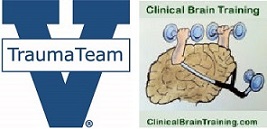The team response to new trauma patients at trauma centers works on a basic principle, you should have a full response present in the ED (about 10 people including an attending surgeon, 2-3 surgery residents, respiratory therapy, anesthesiology, and even a Chaplain) 30% more times than needed. The reason is that if you only have that response in the ED when you need it, you will either wait too long (until the patient arrives) to activate it (thus not having the resources in place and ready to go when a patient may need them), or you will not activate it when you do need it. This is called overtriage and it is expected in trauma centers. Why? Because in about 10% of cases you will need every one of those resources at the bedside on arrival to save someones life. In our opinion, it is worth overreacting 3 out of 10 times to insure you have the right people at the beside 100% of the time when they’re needed.
Naturally, this can be annoying since many times (30%), you are wasting resources. But we feel its the safest way to do things. This tension between “overreaction” and “let’s just wait and see” is present throughout clinical care, from 911 dispatch to the ICU and beyond. Fire departments also err on the side of having more resources available immediately, than to wait and call them when the situation overwhelms the initial response. The problem with “wait and see” involves the concept in my previous post on inertia. It takes time to call help, have them respond, and figure out how they can help in a high risk clinical situation. It is far easier for everyone to arrive before the patient and assign tasks then. Obviously EMS cant be at the scene before they are needed, but fire/ems often has predetermined plans for delegation of tasks when there are multiple assets responding.
This tension is also evident when you are making diagnoses and initiating treatment in the hospital. As I’ve said in previous writings, any idiot can figure out when someone is dying, the good clinician intervenes before the patient crashes. In order to identify those patients who are beginning to decline, you need a high index of suspicion, and since they are not obviously crashing, you will need labs and studies to obtain data that will demonstrate things are not going on the right direction.
The pressure to obtain less tests and less studies to contain cost often comes into conflict with the desire to make certain that your patient is on the right track. It is a fact of life that when a patient clearly demonstrates they are very sick, it may be too late to save them. Also, despite the costs of additional tests and studies, these costs pale in comparison to the cost of ICU care for someone whose negative trajectory is not detected. Protecting the patient is our first duty, and to protect we must look for problems. Remember it’s not the patient’s job to prove to you they are sick, it is your job to prove they are OK.



 Subscribe in iTunes
Subscribe in iTunes